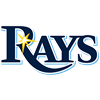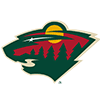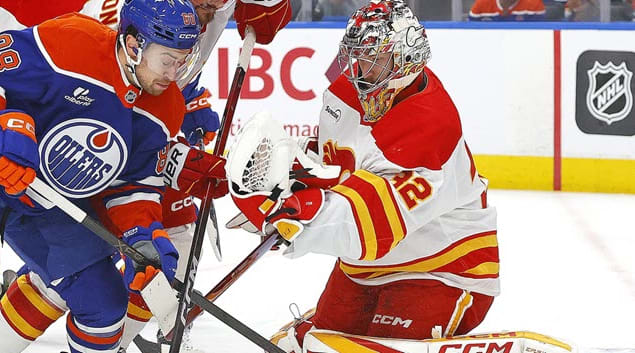Before we get started, make sure to review your league's categories before your fantasy draft. Some players' fantasy values will change drastically when certain statistics are factored into the equation. With that being said, let's get into some other general draft strategies to consider.
1. Do as many mock drafts as possible
Practice makes perfect. Mock drafts can give you a strong feel of what other fantasy managers are thinking going into the year. Who are they underestimating? Who are they overestimating? You can snag some very good players in favorable spots by getting a sense of the draft landscape before draft day while avoiding potential landmines along the way. It's a great way to get a sense of which players are going where based on average draft position before you're thrown into the chaos of making selections against the clock amid the chirps of your draft buddies. Additionally, there's a lot to be learned from any mistakes you make before participating in drafts that matter.
2. Look for potential stack plays
You don't have to stack entire line combinations and taking too many players from one team typically isn't a great move, but getting a couple of strong producers that play together is a great way to rack up points. Just don't go overboard, because you could put yourself in a tough situation if a team you leaned into heavily has a light schedule in a certain week or performs below expectations. Another fruitful stacking method is to target
Before we get started, make sure to review your league's categories before your fantasy draft. Some players' fantasy values will change drastically when certain statistics are factored into the equation. With that being said, let's get into some other general draft strategies to consider.
1. Do as many mock drafts as possible
Practice makes perfect. Mock drafts can give you a strong feel of what other fantasy managers are thinking going into the year. Who are they underestimating? Who are they overestimating? You can snag some very good players in favorable spots by getting a sense of the draft landscape before draft day while avoiding potential landmines along the way. It's a great way to get a sense of which players are going where based on average draft position before you're thrown into the chaos of making selections against the clock amid the chirps of your draft buddies. Additionally, there's a lot to be learned from any mistakes you make before participating in drafts that matter.
2. Look for potential stack plays
You don't have to stack entire line combinations and taking too many players from one team typically isn't a great move, but getting a couple of strong producers that play together is a great way to rack up points. Just don't go overboard, because you could put yourself in a tough situation if a team you leaned into heavily has a light schedule in a certain week or performs below expectations. Another fruitful stacking method is to target players who will be deployed together with the man advantage. That could be another forward or a defenseman who will be quarterbacking the power-play unit. This type of stack is typically easier to accomplish after selecting a prominent forward in an early round.
3. Find value whenever you can, especially in the later rounds
Plenty of players will slip through the cracks on draft day. Identifying potential sleepers, breakout performers and rookies set to have significant roles can make a huge difference when rounding out your team in the later rounds. However, you shouldn't ignore the veteran stars with established track records, either, as they can also be excellent value additions. Fantasy managers often prefer to chase the next big thing rather than scooping up reliable producers, and you can take advantage of that impulse to strengthen your depth. They may also be uncomfortable straying away from a league's draft rankings or average draft positions, which is a trap experienced managers won't fall into.
4. Focus on positions of need, especially when it comes to scarcity
Finding high-quality centers isn't a difficult task on draft day. The center position is deep, and several centers have eligibility on the wing as well, which makes filling the position and gaining roster flexibility that much easier. Obviously, picking near the top of the draft or having the first overall pick can alter your approach, but generally you can afford to wait on centers. Most defensemen are chosen during runs when fantasy managers realize they need to fill out the position. The top-tier blueliners almost always go early due to their high-end offensive output, especially if they're capable of generating points on the same level as a high-scoring forward. To simplify it further, if you or whatever projections you use has two players finishing with similar totals, then going with the position that isn't as loaded with high-end talent is generally the best course of action. Another good position to prioritize in the earlier rounds is right wingers, as that group can thin out fairly quickly in terms of top-tier options.
5. Address your goaltending sooner rather than later
I realize that fantasy managers hate getting burned on goaltenders, especially when they use an early pick to address the position. Still, I don't subscribe to the belief that taking a netminder early is a bad move. There's a great deal of randomness involved when drafting any player, and getting quality goaltending is crucial to your fantasy team's success. Selecting a workhorse with high-win potential on a strong team is better than trying to hunt for a suitable option in the later rounds. Of course, I do believe that finding value in the later rounds with one or two backups is a justifiable strategy. You just don't want to find yourself in a situation where you need to rely on the waiver wire to stream goalies throughout the season. If someone you took a chance on doesn't pan out, having the flexibility to address your goalie depth once the season starts is a prudent course of action. However, I still prefer to have stability at the position from the get-go, so going after someone like Andrei Vasilevskiy or Igor Shesterkin in the first few rounds is always on my mind.
6. Ignore your hockey bias
There are fantasy managers out there who prefer to take players from teams they cheer for, which is perfectly fine. However, if you simply want to win then you shouldn't hesitate to choose players from teams that you don't normally cheer for or even ones that you downright dislike. In the end, you want to have the best roster possible. Don't approach fantasy hockey the way some fans do by overrating players who suit up for your hometown team or by underrating a star player from your team's rival. If you know some fantasy managers in your league gravitate towards players from their favorite teams, you can take advantage, especially in auction drafts. It's important to remember that fantasy hockey is primarily for fun -- I believe most fantasy managers have more fun when they're winning.
7. Be up to date on injuries
Injuries can completely sink a fantasy season. I've never seen as much red on rosters, which signifies sidelined players, than there's been over the past two seasons. Most of that can obviously be attributed to the NHL's COVID-19 protocols list. It added an extra wrinkle, especially when some players ended up on injured reserve while others maintained a day-to-day status for what seemed like an eternity. Most training camp ailments are minor, but fantasy managers should stay on top of them as there will be players who suffer an injury that will keep them sidelined for the first few weeks or months of the regular season. If you don't mind waiting for them to return, knowing when to take dinged-up skaters is something you can experiment with in mock drafts. Once you find a comfortable spot to select an ailing player, you can stash them on your injured reserve list and search for a replacement on waivers. It's a good rule of thumb to check the waiver wire once your draft is completed so you can see what options are out there among the players who weren't drafted.

































